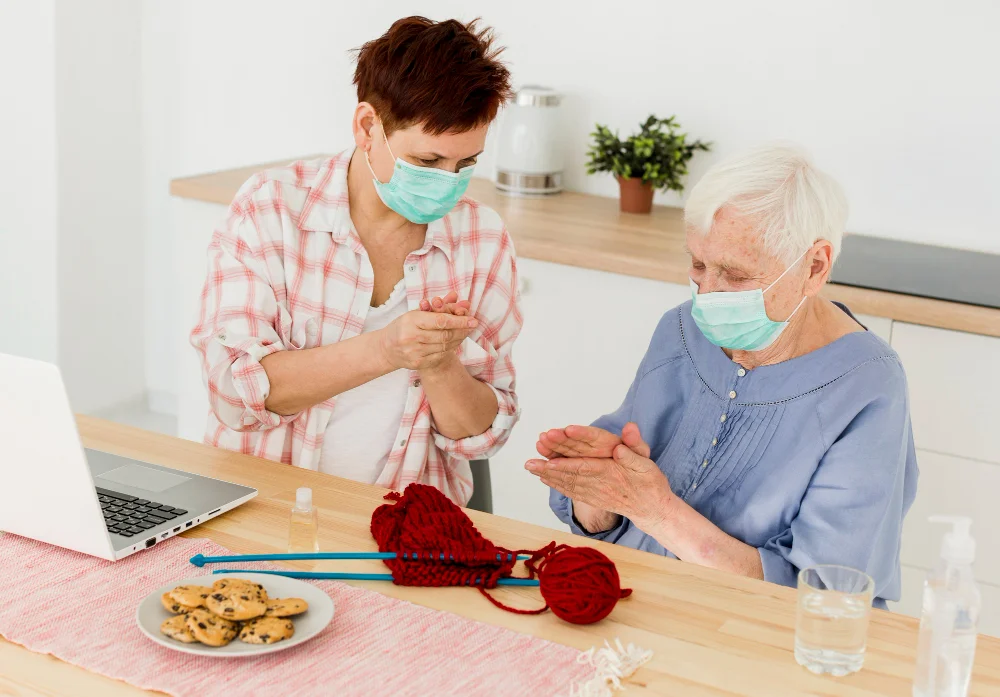Living with a chronic condition like sickle cell anaemia demands more than just medication. It requires major lifestyle adjustments to reduce pain episodes and improve overall health. That’s why lifestyle changes with sickle cell are critical to managing symptoms and improving quality of life.
These changes don’t have to be overwhelming. With minor, consistent improvements, individuals with sickle cell disease can enjoy more energy, fewer hospital visits, and better control over their condition. From food choices to stress relief, every habit plays a role.
The goal is to empower people with practical steps that are sustainable and rooted in real-life needs. This guide covers all key aspects from nutrition to self-care to help anyone living with sickle cell thrive, not just survive.
Diet and Hydration Habits
What you eat and drink significantly affects how you manage sickle cell disease. A healthy diet helps your body produce stronger red blood cells and lowers the risk of complications like anaemia or fatigue. Hydration keeps your blood less sticky and improves circulation, which is crucial for preventing blockages and pain.
Iron-rich foods like spinach, lean red meat, lentils, and fortified cereals support haemoglobin production. Vitamin C from citrus fruits enhances iron absorption, making your diet even more effective. Proper nutrition also boosts your immune system, helping fight infections that sickle cell patients are more prone to.
Moreover, staying hydrated throughout the day prevents dehydration, which is a common trigger for pain crises. Water is essential, but so are hydrating foods like cucumbers, oranges, and soups.
Bullet Tips for Diet and Hydration
- Drink at least 8–10 glasses of water daily.
- Include iron-rich foods such as kale, red meat, and beans.
- Add fruits rich in vitamin C, like oranges and strawberries.
- Avoid caffeine and alcohol as they can dehydrate you.
- Eat small, balanced meals to maintain steady energy.
Physical Activity and Rest Balance

Physical activity can improve blood flow and reduce stiffness, but overexertion can cause fatigue and trigger pain. A balanced approach is necessary. Gentle exercises such as walking, swimming, and stretching promote cardiovascular health and reduce inflammation. These activities also improve your mood and reduce stress.
Rest is just as important as movement. People with sickle cell may feel exhausted even with moderate effort, so it’s essential to listen to your body and schedule rest periods throughout your day to avoid burnout. Rest doesn’t always mean sleeping; it can include reading, meditating, or simply lying down.
Furthermore, it’s important to avoid physical activity during extreme weather. Cold and heat can both increase the risk of sickle cell crises.
Tips for Managing Activity and Rest
- Do light exercises like yoga or walking 3–4 times a week
- Avoid intense workouts or high-impact sports.
- Rest when you feel fatigued without feeling guilty.
- Avoid exposure to extreme weather while exercising.
- Warm up and cool down properly during exercise sessions
.
Stress Management Techniques
Emotional and mental stress can worsen sickle cell symptoms. High stress levels constrict blood vessels, potentially triggering a pain crisis. That’s why relaxation techniques are an essential lifestyle shift. Deep breathing exercises, mindfulness, and meditation have all been shown to calm the nervous system and reduce physical pain.
Over time, people who regularly manage their stress report better sleep, fewer emotional breakdowns, and improved relationships. Music therapy, journaling, and even regular laughter help regulate cortisol and keep the body in balance.
By reducing emotional tension, you also reduce the frequency and intensity of sickle cell complications. Inner peace translates into physical comfort.
Temperature Control and Environment

Cold weather causes blood vessels to narrow, which may lead to blocked blood flow, a key cause of sickle cell pain crises. Hot temperatures, on the other hand, can cause dehydration and fatigue. Therefore, managing your physical environment is critical to staying comfortable and pain-free.
Wearing weather-appropriate clothing, using heated blankets in winter, or cooling fans in summer makes a big difference. Avoiding sudden transitions between hot and cold spaces can also help stabilize your body’s response.
This change in routine may seem small, but it’s one of the most effective lifestyle adjustments to prevent pain and discomfort.
Routine Health Monitoring
Keeping track of your health status helps prevent complications from escalating. Routine health monitoring is a foundational aspect of lifestyle changes with sickle cell, especially since early detection often leads to quicker, more effective treatment.
Regular blood tests help check your haemoglobin levels, organ function, and infection risk. It’s also vital to maintain appointments with haematologists and specialists familiar with the condition. If you’re a parent or caregiver, keep a medical diary of symptoms, medication reactions, and fatigue patterns.
This approach allows you to take charge of your condition instead of waiting for symptoms to worsen.
Key Health Monitoring Practices
- Schedule doctor visits every 3–6 months
- Get blood tests to check haemoglobin and liver function.
- Record daily symptoms and medication reactions
- Stay updated on all vaccinations.
- Monitor for signs of infection, such as fever or fatigue.
Building a Support Network
Having a reliable support system is essential when navigating life with a chronic illness. Whether it’s emotional encouragement or practical help with hospital visits, support systems enhance resilience and reduce isolation.
Support groups, both online and offline, provide spaces to share experiences and learn coping strategies. Family members and friends can be educated about your condition so they can offer the right kind of help when needed. Counselling may also help you or your caregivers deal with emotional burnout.
When you’re surrounded by understanding people, it’s easier to face both the good and the hard days with strength.
Travel and Daily Life Planning
Travelling or being outside your usual routine can be risky without proper planning. But that doesn’t mean you have to give up adventures or everyday errands. Planning allows you to live your life more freely and with fewer health interruptions.
Keep a travel pack ready with water, snacks, medications, and emergency contacts. Before going anywhere, check the weather and locate nearby healthcare centres in case of emergencies. Wear layers to manage temperature changes and avoid prolonged exposure to extreme environments.
These small preparations can prevent pain crises and offer peace of mind wherever life takes you.
Essential Planning Tips
- Carry necessary medication and pain relief
- Pack layers of clothing for changing weather
- Keep a small water bottle with you at all times.
- Inform travel companions about your condition.
- Locate the nearest hospital or clinic ahead of time.
Conclusion
Making lifestyle changes with sickle cell isn’t about becoming someone else; it’s about becoming more in control. Whether it’s monitoring your health, improving your diet, managing stress, or building support, each small step helps reduce complications and pain.
These changes also support emotional and mental well-being, empowering people with sickle cell to live longer, fuller lives. Small, daily routines often lead to long-term results, especially when done consistently and mindfully.
In the end, living with sickle cell doesn’t mean surrendering your quality of life; it means creating it, one lifestyle choice at a time.


















